Hawaiian Spinner Dolphin Pictures, Behaviors, Videos and Information
The Hawaiian name for dolphin is nai’a, and refers to most all dolphins found here.
With 18 species of toothed dolphins (nai’a) swimming in the tepid waters of Hawaii, the most common are the Hawaiian spinner, pantropical spotted (kiko), and bottlenose dolphins.
Hawaiian spinner dolphins are shaped and colored somewhat differently from other species of spinner dolphins.
So called for their high, spinning leaps, spinner dolphins are known as playful, eager bow-riders throughout much of their range.
In certain areas in Hawaii, spinner dolphins are seen on an almost daily basis.
Below are descriptions of daytime behaviors the acrobatic spinners frequently engage in. Pictures were taken during our dolphin encounter tours.
Swimming with spinner dolphins from shore is illegal. There are 17 other Oahu dolphin species that are unaffected by this law. Local Hawaiians feel quite strongly about visitors illegally swimming with spinner dolphins from Oahu public beaches.
Our wildlife tours focus on education and conservation so that an interactive relationship can be maintained in the best interest of both humans and dolphins.
Hawaiian Spinner Dolphin Stats
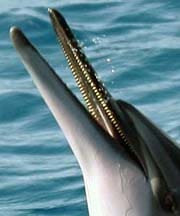
Scientific Name: Stenella longirostris
Hawaiian Name: “Nai’a”
Size: 1.7 to 2.2 m, 75 kg. Males slightly larger than females
Calves at birth: 77 cm, 45 to 65 sharp-pointed teeth on each side of upper and lower jaw
Food: Fish (small deep-ocean species) and squid
Habitat: Mainly offshore, nearshore resting grounds in teh tropics
Range: Tropical, subtropical and warm temperate world ocean
Status: Population unknown, but common in most parts of its range. Substantial declines have occurred in the eastern tropical Pacific
Spinner Dolphin Behaviors
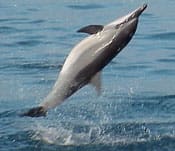
Spins
Spinner dolphins are famous for their fantastic jumps high out of the water.They can leap into the air and make as many as 4 complete spins before diving back into the ocean! Few dolphins are known to leap as high as the Spinner and except occasionally for the Clymene dolphin, no others spin. Why Do Spinner Dolphins Spin (from The Wild Dolphin Foundation)?
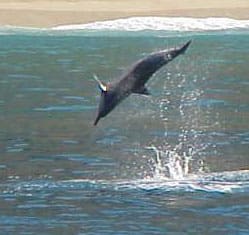
Head-Over-Tail
This aerial behavior is probably the most energetic. While the spin is more like a top, this leap is a series of mid-air somersaults.
Vocalizing
Spinner Dolphins can be very noisy under and above water. The d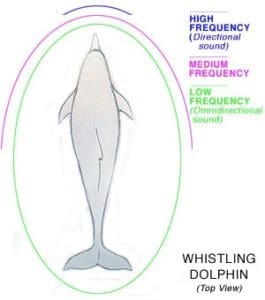
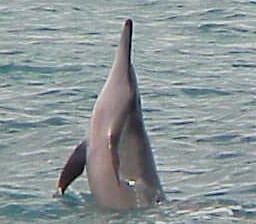
Head Slaps
This very young spinner has already learned a way to get mom’s attention. Repeated head slaps send an acoustical message. Notice the pinkish underside, normally white, this could mean excitement or the product of vigorous slapping!
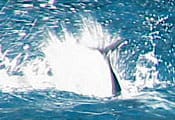
Tail or Peduncle Slaps
Often seen before a change in the pods behavior. Most often, immediately after we see this behavior, the pod will change its traveling direction. Tail slap video and how it looks from underwater. The dolphin is excited about his “play toy!”
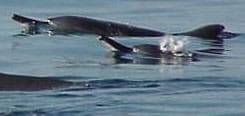
Nose-Outs
Often seen before going into a rest mode, or when they seem to have interest in us. These, although still classified as aerial behaviors are the least energy taxing.
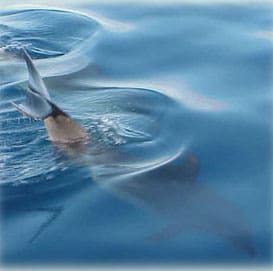
Fluke-up Dive
Dives with the tail (flukes) raised in the air seem to signal deep dives. This a borderline aerial behavior – as it still happens above the water line, but is not very active.
Playing Behavior
Spinners often make “play-toys” of objects in their environment. In our area, the tradewinds blow lightweight plastic grocery bags into the ocean. The dolphins drape these over their fins and pass them back and forth.
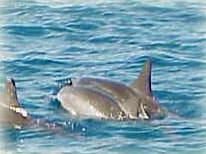
Echelon Swimming
Newborn calves can be seen swimming near Echelon Swimming. near their mothers head for about a week before they swim nearer to her dorsal fin. This is termed as echelon swimming. Dolphins carry their young inside their womb and gestation is about 12 months for a bottlenose. The baby emerges tail first, and will suckle from its mother for up to 4 years.
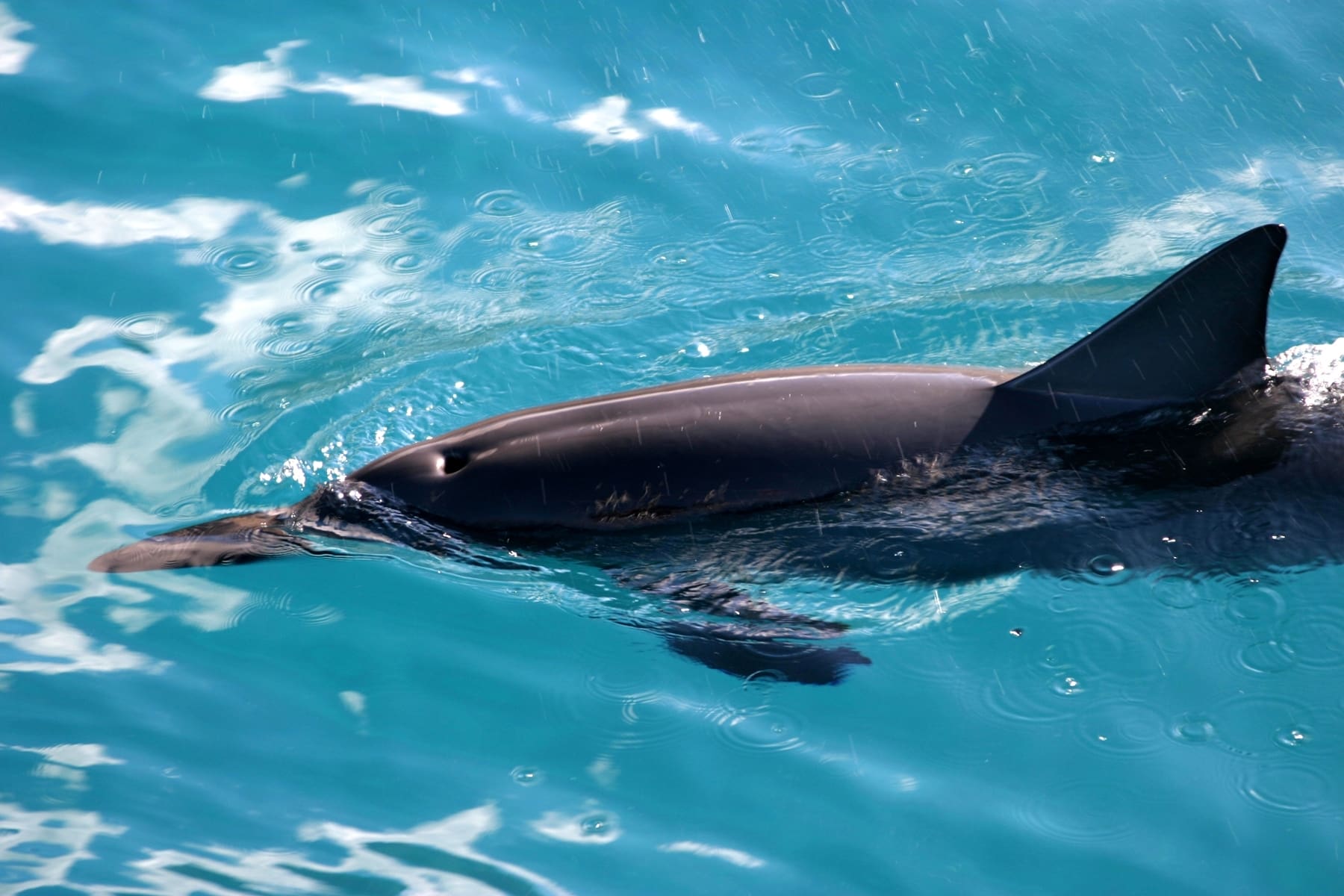
Breathing
A dolphin may empty and refill its lungs in less than a fifth of second. at speeds of over 100mph. To sleep, a dolphin must shut down only half of its brain at a time, as its breathing is under voluntary control.
Oceanic dolphins have evolved a method to breath without the blowhole being out of the water. A bubble is blown when near the surface, forming a tunnel through the water. The dolphin quickly draws breath in through the tunnel.
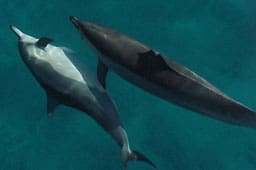
Social Behavior
Spinner dolphin’s pectoral flippers are used social lives of dolphins to steer them through the water, and they also use them to stroke one another, increasing the social bond between them. Dolphin “friends” may swim along face to face touching flippers. Dolphins that appear to be closely bonded may swim in synchrony, twisting, turning and swimming in perfect harmony together.
